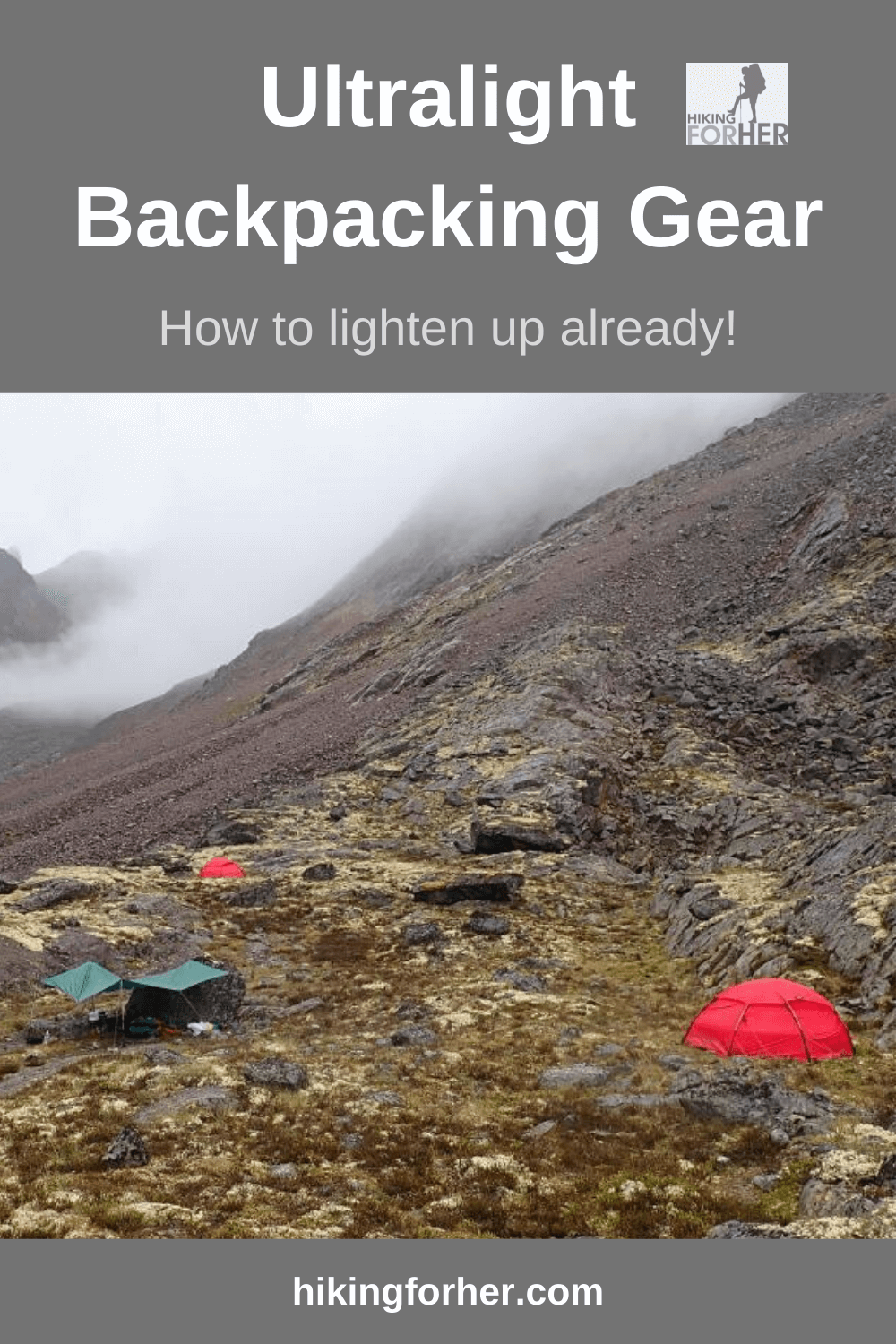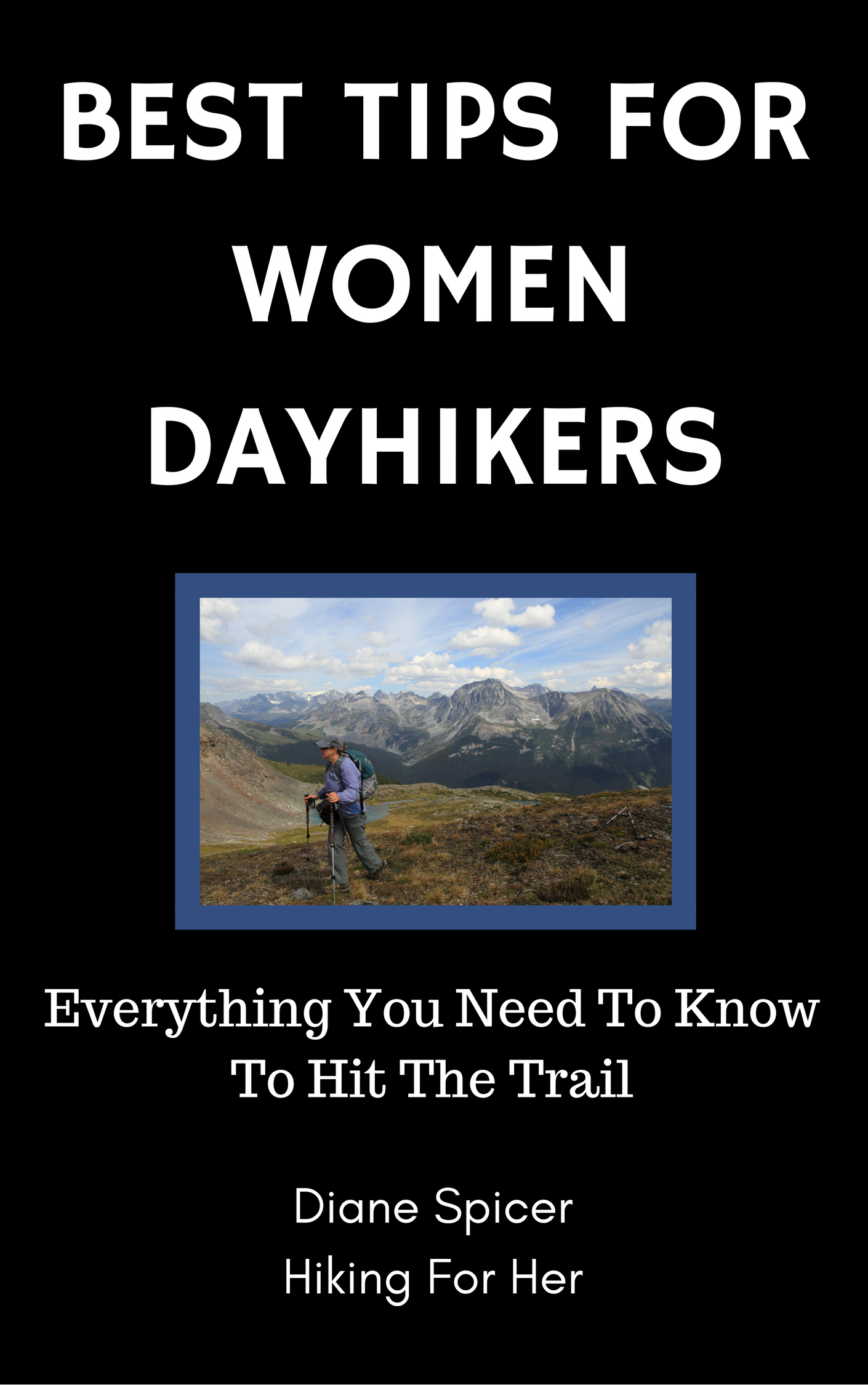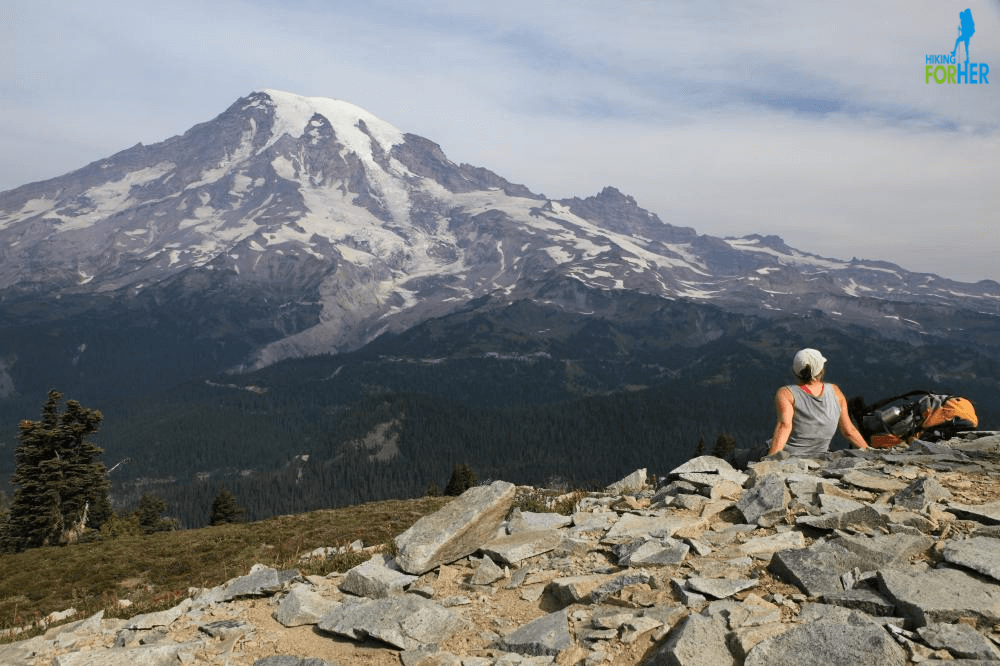
Ultralight Backpacking Gear Tips
To Make The Transition Easy
By Diane Spicer
Ultralight backpacking gear (UL) is aimed squarely at backpackers who want to shave time and effort off their hikes.
Their motto:
"Fractions of ounces matter. A lot".
This type of hiking appeals to a minimalist, someone who wants to go fast and light without being burdened by creature comforts.
It also appeals to a hiker who has gotten to a certain age (defined by that hiker, not social media or Hollywood).
This is in contrast to a traditional backpacker who, from the UL perspective, is a plodder carrying way too much weight.
Ultralight backpacking equipment is designed to ease the anxiety of any hiker who has a particular base pack weight target to achieve.
So if you're headed into the backcountry, or are contemplating a thruhike, the ultralight backpacking approach should be on your radar.
But where to start?
Start by defining base pack weight
Base pack weight = backpack + what's in and on it, minus food, water, fuel or anything else consumed over the duration of the hike.
To be considered lightweight, base pack weights need to stay around (or under, which is the target of fierce competition) 20 pounds, or ~ 9 kg.
Ten pounds (4.5 kg) is the maximum target weight for an ultralight backpacker.
You're probably wondering if that can be done.
Absolutely, today's gear and clothing is amazingly lightweight as well as durable and dependable.
Quick clarification on weights
NOTE: These weights are for U.S. hikers, and the numbers vary depending on where you are and who you're talking to.
UL backpacking can (and does) become a competitive sport in certain hiking circles!
For me, these gear weights are astounding. I started backpacking in the late 1970's, carrying up to one third of my body weight in heavy gear.
- That worked out to 40+ pounds!
But time marches on along the trail of progress, and we must catch up to it!
And harness its goodness for our own purposes.
Ready to explore UL backpacking gear?
Let's take a quick stroll (because we're going fast and light, rather than heavy and burdened) through what sets ultralight backpacking equipment apart from the regular stuff.
Here's what we'll cover:
- Historical origins
- Facts about hiking you can't avoid
- Ultralight backpacking gear sources
- How to get started with UL hiking
- Ultralight gear recommendations
Fast and light hiking: historical origins
One of the first people to notice that traveling light was the way to hike was Emma Gatewood. Her late-in-life Appalachian Trail adventures make me proud to be in the female hiker clan.
A climber (among other things) named Ray Jardine receives most of the media credit for the origins of the ultralight backpacking equipment philosophy, which makes sense coming from a guy who defied, and defeated, gravity again and again.
- He's got an entire product line of gear you can make yourself to shave off ounces (or grams) left and right...
- ... plus a book authored in 2009 that you need to read if you're going to tackle thru-hikes such as the Pacific Crest Trail, the Appalachian Trail, the Superior Trail or the Continental Divide Trail.
The book can give you some great trail insights even if you're not interested in lightening up the the nth degree.
- His "stealth camping" tips can be utilized by all women solo hikers.
And there's a chapter written by a woman to shed light on female hiker trail issues.
I highly recommend it!
Warning: If you adhere to the RayWay of Mr. Jardine, you could be sewing your own lightweight hiking gear to save weight!
- He even gives you sewing tips on the link I shared above.
Non-negotiable facts about hiking
The planet we live on enforces certain rules.
These rules are annoying to hikers in general, but particularly onerous to lightweight and ultralight backpackers.
Rules such as...
- One liter of water weighs 2.2 pounds pretty much everywhere.
- Your body needs at least 2 liters, minimum, per day for kidney function and hiking performance.
- Your core temperature must be maintained regardless of weather conditions. Staying warm requires regular ingestion of fuel known as food.
- Your food can be dehydrated, but must be ingested in a hydrated state for proper digestion and release of steady energy.
- Your basal metabolic rate (BMR) requires roughly 1000 calories (more correctly referred to as kilocalories, but not commonly used) per 100 pounds of body weight to remain operational.
- Hikers need way more calories than that, because they're working hard regardless of how much the backpack weighs.
- Weight on your feet "costs" you more effort than properly distributed weight on your back. Hiking boots -vs- trail shoes is a discussion you need to have with yourself.
All of these facts lead to a hiker's natural curiosity about how to reduce the weight of backpacking gear.
Which leads us to considering whether or not ultralight backpacking gear is a good choice for your trail time.
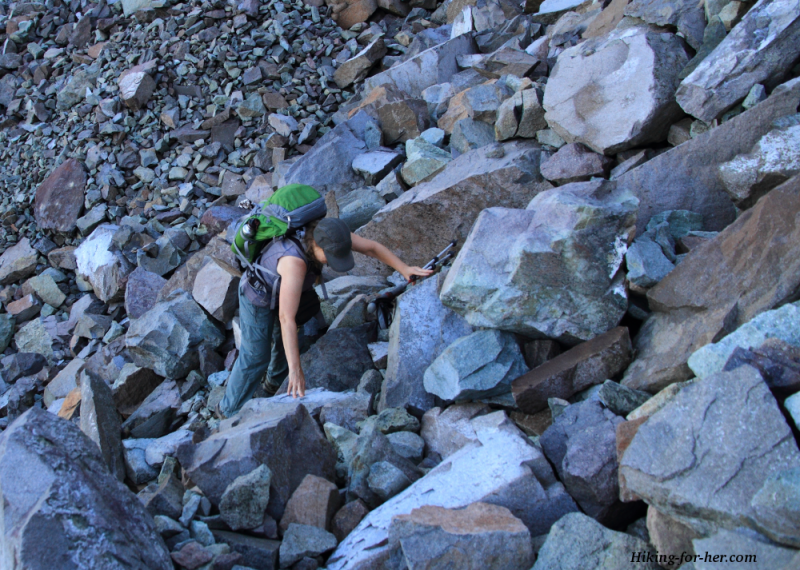 Gravity is not a hiker's friend
Gravity is not a hiker's friend
Ultralight gear options to consider
What kind of backpacking gear delivers function and form without a lot of annoying gravitational tugging?
A sarcastic hiker might respond: expensive gear, that's what!
Indeed, it takes some coin to purchase the highest end lightweight backpacking equipment,.
But it could be the best investment you ever made if it spares you a sore back and gives you more time to explore the backcountry.
UL backpacking gear companies in the U.S.
Expect the names of the ultralight backpacking gear companies to be different than the usual suspects.
Several companies specialize in lightweight hiking equipment to appeal to a select group of hikers:
These are affiliate links, the only way I pay for this hiking website. If you purchase through these trusted companies, you pay nothing extra.
Tip:
Some gear stores will rent ultralight backpacking gear, something I highly recommend before making an investment in any hiking equipment with a high price point.
- Check out the REI Co-op rentals.
How to get started selecting ultralight backpacking gear
You don't want to succumb to sticker shock and walk away from ultralight gear.
You don't want to pass up a chance to lighten your load.
So choose the middle ground and explore your ultralight backpacking gear options one day at a time, with no pressure on yourself to achieve a particular base weight.
Avoid the mistake of trying to switch over everything all in one go. It adds cost and frustration to what should be a pleasant planning process.
Read some reviews
Start with something easy.
Read what some of the gear testers have to say about lightweight gear.
Then decide if you need to be a fanatic about weight, or just want to shed a few pounds of pack weight.
Here's a little advice on how to avoid feeling intimidated if you're just wading into the world of ultralight backpacking gear, and why going lighter and lighter is kind of a silly way to frame things for a hiker.
And here's a great choice for your hiking bookshelf as you evolve, or dive into, ultralight backpacking gear:
Trail Tested: A Thru-Hiker's Guide To Ultralight Hiking And Backpacking
Try this gear strategy
If you're just beginning to entertain the wonderful idea of a lighter pack on your next backpacking adventure,
I recommend the following strategy.
Don't run out and buy anything new.
Instead, get a reliable scale and record the weight of every piece of backpacking equipment you now possess.
If you need to purchase some gear, do some comparison shopping and take note of the weights.
Select the lightest gear possible within your budget.
This ultralight pack review will help you get started.
Map out your hiking goals
Next, sit down with maps and guidebooks and decide what your upcoming hiking season looks like.
Then consider which gear you can leave at home, or swap out for new ultralight gear.
Questions to ask yourself:
- If you're staying in temperate areas, do you need to carry a sleeping bag? Maybe just a liner or a quilt will do.
- Can you stay warm and dry, and indifferent to insects or rodents, under a tarp?
- Is a sleeping pad necessary?
- Do you really need an extra shirt or back-up pair of pants? If you're dressing for fashion, be ruthless with your choices of athletic clothing.
- How can your sleeping system can be lightened up with no loss of warmth? Use a backpacking quilt.
- Will you have access to abundant sources of water? Maybe only one water bottle is required.
- How heavy of a rain jacket will you need (shell, double layered)?
- Can your tent stakes be left behind?
- Will one trekking pole be enough?
Examine every piece of gear you're currently carrying, including your camp kitchen equipment.
- Lightweight and durable titanium cookware is a great idea regardless of where you're headed, perhaps paired with an alcohol stove (unless they're banned where you're hiking; read up on backpacking stoves here).
On and on it goes, the merry chase of "What can I leave at home?"
- Subtitle: "Shaving the ounces bit by bit"
Have some fun with it!
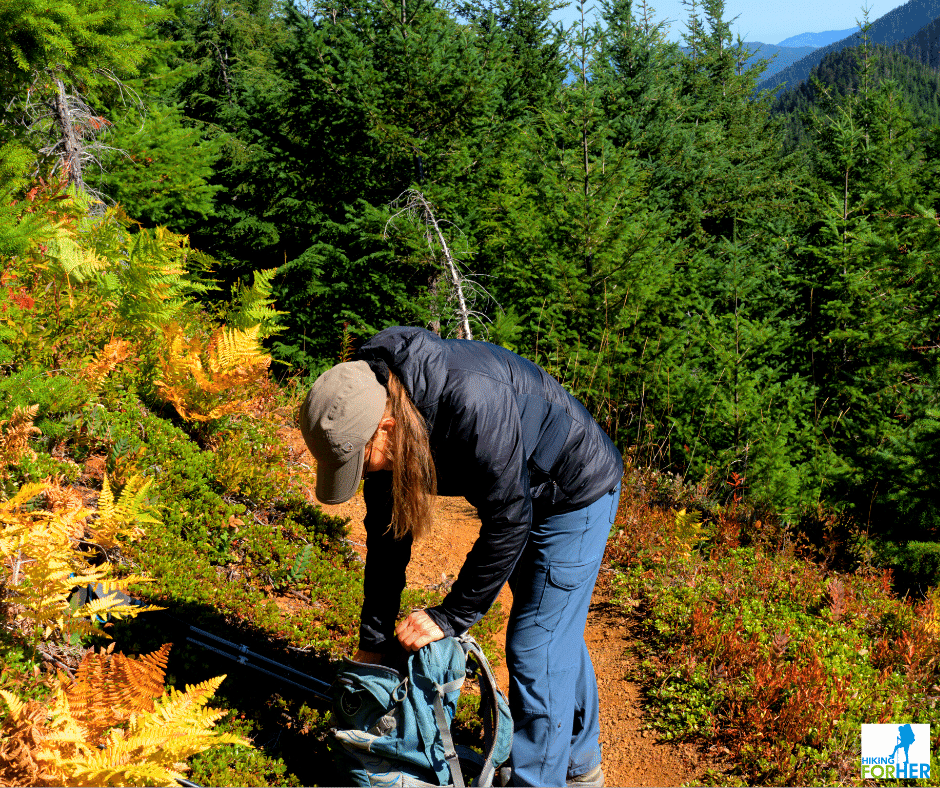 Loving a lighter backpack!
Loving a lighter backpack!
Slow down to avoid overwhelm
I caution you to avoid getting sucked into the black hole of shaving off ounces along with a necessary margin of safety and comfort.
It's great to lighten up, but not at the risk of you not getting back to the trailhead in one piece.
- Your base weight is a non-negotiable number for comfort and safety.
- Don't leave survival and comfort gear behind just for bragging rights to a low base weight.
Caching supplies along a long trail for thruhiking or section hiking is of course the best way to lighten your load.
This includes gear replacement, such as hiking shoes, socks, and stove fuel.
But slow down a minute.
Caches make sense as long as you've:
- plotted your course carefully
- factored in "oops" days so you don't have to forego food or water
- vowed to stick to your plan once you're on the trail
- set aside enough cash for "in town" days when your supplies haven't shown up as scheduled
- know when the post office or general store is open
So be sure to map out resupply opportunities, factoring into account shorter store hours in rural communities, holidays and week-ends when stores will be closed.
Consider how much effort it will be to arrive there during store hours. Do you need to hitchhike at odd times, when you have less chance of getting to town quickly?
Again, this takes dedicated effort and time, but it's well worth it for a successful backpacking trip. The weight of your gear is not your only consideration as a backpacker.
Trusted UL backpacking gear
Now it's time to consider which gear you can afford to switch over to ultralight versions.
I have done this, one big item at a time, over several years, and found it to be a nice gradual transition that didn't shock my check book.
Tip: Accept the irony that less is going to cost more.
- But UL backpacking gear will make you smile more when you hoist your backpack.
Now let's get to it. Because we're focused on the "light" part of this gear, I'll highlight weights above all else.
Your sleep system choices
Let's start with basic necessary gear: your sleep system and shelter.
If you're not familiar with a sleep system, start here. Basically, it's a sack to keep you warm and a pad to keep you... well, padded.
You have two choices for a warm snuggly nest at night, a sleeping bag or a backpacking quilt (those links take you to the basics).
To compare these two options, read this.
Outdoor Vitals (OV) has a sleeping bag and a quilt you should take a look at. I own both.
You have lots of options for length and temperature, so be sure you look at the right choices to get your base weight right.
 Summit Down Sleeping Bag Summit Down Sleeping Bag
30°F 15°F 0°F Read my review (coming soon). |
 StormLoft™ Down TopQuilt StormLoft™ Down TopQuilt
30°F Long: 1 lb 6 oz (13.2 oz / 375 g Fill Weight)
Regular: 1 lb 7 oz (16.2 oz / 460 g Fill Weight) Long: 1 lb 10 oz (18.1 oz / 515 g Fill Weight) 0°F Regular: 1 lb 12 oz (21.2 oz / 600 g Fill Weight) Long: 1 lb 15 oz (23.2 oz / 660 g Fill Weight) Read my review here. |
Sleeping pad ultralight backpacking gear choices
You want to keep your body heat inside your sleeping cocoon. So insulate yourself from the cold, damp ground with a sleeping pad.
Here is what I use:
Why?
It's less noisy than other choices, it's super lightweight at 13 ounces, and I've trusted that brand since forever.
Ultralight backpacks
You'll need the right volume for your hiking plans.
Just remember that UL gear not only weighs less (your base weight is reduced), it usually packs down to a smaller footprint (less volume).
So maybe you can use a backpack with a smaller volume. Best to try out this theory on your own, don't take my word for it.
 Windrider 55 by Hyperlite Mountain Gear Windrider 55 by Hyperlite Mountain Gear
|
Hyperlite Mountain Gear offers this UL backpack in four torso sizes. Weight: 31oz (varies slightly by torso size) Volume: 55L (3,400 cu. in.) main body |
Ease into ultralight backpacking gear
That's enough information to get you started on ultralight backpacking gear!
Every year, focus on one other big thing (tent, backpacking kitchen, boots, etc.) and lighten up your gear list.
It's kind of addictive, and definitely easier on your knees and back.
Also, more reasonably priced than one big buying spree.
Ultralight backpacking gear:
does it make sense for your hiking plans?
Only you can decide whether or not to invest your time, brain power and money into lightening up your pack.
No matter where you decide to shed weight, please realize that you're way ahead of where hikers were just a few decades ago.
Take small steps to trim the weight of your hiking gear, as we outlined above.
And never pass up a chance to ask questions, pick up someone's pack and mentally weigh it against yours (with permission, of course), or read about what other hikers are doing.
Send any questions my way.
I don't claim the title of ultralight backpacker (yet).
But I am definitely making an effort to go lighter each season as I replace my worn out hiking equipment (beyond a few token things like Ziploc bags acting as stuff sacks, and ditching my heavy tent).
I'm taking a sensible, rational approach with the goal of lightening up as I age. I love to talk about the merits, and drawbacks, of ultralight backpacking gear.
More tips for older hikers here.
Home page > Best Hiking Gear >
Ultralight Backpacking Gear
|
I get emails all the time about what I wear, eat, carry and love to use on the trail. That's
why I provide affiliate links to you: the best gear that I use myself and have seen used by other hikers is instantly
available for your consideration, and the gear company sends a few
pennies per dollar to this reader-supported hiking website. There is no added cost to you! Everyone ends up a winner: Great gear for you, strong gear companies, and more free hiking tips for everyone. Thanks very much for your support. It's warmly and sincerely appreciated. It also helps send these hiking tips to all your virtual trail buddies around the globe. |
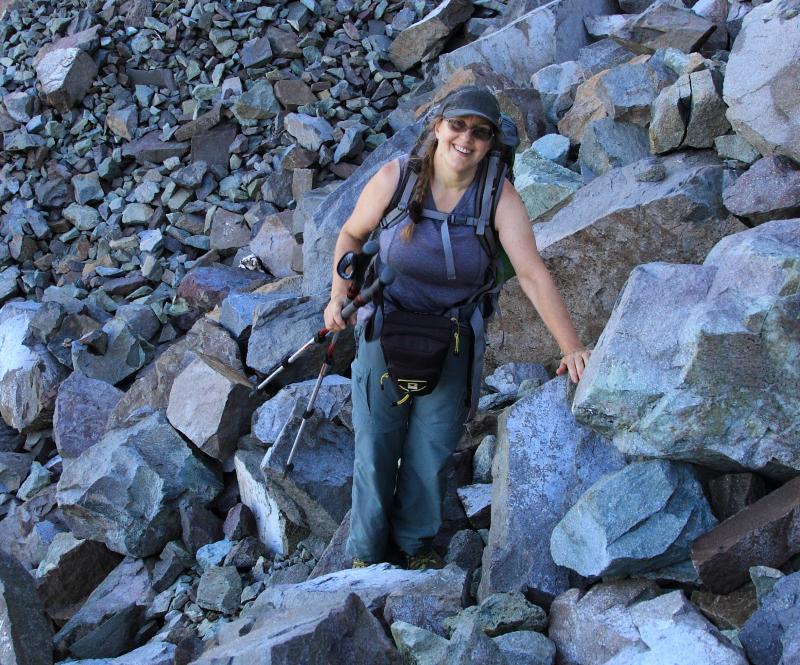 |
